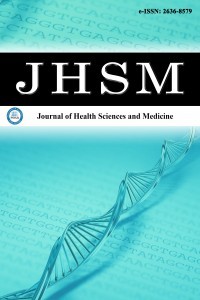1.
Wang W, Uzzau S, Goldblum SE, Fasano A. Human zonulin, a potential modulator of intestinal tight junctions. J Cell Sci. 2000; 113(24):4435-4440.
2.
Fasano A. Zonulin and its regulation of intestinal barrier function: the biological door to inflammation, autoimmunity, and cancer. Physiol Rev. 2011;91(1):151-175.
3.
Sturgeon C, Fasano A. Zonulin, a regulator of epithelial and endothelial barrier functions, and its involvement in chronic inflammatory diseases. Tissue Barriers. 2016;4(4):e1251384.
4.
Çelik S, Yurtcu N, Çalışkan CS, Çelik S. Zonulin as a potential biomarker for diminished ovarian reserve: a prospective study. Turk J Obstet Gynecol. 2023;20(2):120-125.
5.
Daneshvar M, Yadegari A, Ribaldone DG, Hasanzadeh M, Djafarian K. Zonulin levels in complicated pregnancy: a systematic review and meta-analysis. J Obstet Gynaecol. 2022; 42(7):2621-2628.
6.
Lin JH, Hsu YH, Wang PH. Risks for preterm premature labor: many of them are preventable. J Chin Med Assoc. 2020;83(5):421-422.
7.
Chu YT, Hsu A, Wu CC, Tsai H Der, Tsung-Che Hsieh C, Hsiao YH. Acute chorioamnionitis complicated with symmetrical peripheral gangrene. Taiwan J Obstet Gynecol. 2020;59(6):972-974.
8.
Park JE, Park Y, Yuk JS. Incidence of and risk factors for thromboembolism during pregnancy and postpartum: a 10-year nationwide population-based study. Taiwan J Obstet Gynecol. 2021;60(1):103-110.
9.
Skupski D. Preterm premature rupture of membranes (PPROM). J Perinat Med. 2019;47(5):491-492.
10.
Hosseini SA, Ghalesardi OK, Kamaei Z, et al. Associations of maternal serum zonulin and elements concentrations with neonatal birth weight: a case-control study. J Clin Diagnos Res. 2017;11(12):1-4.
11.
Tarko A, Suchojad A, Michalec M, Majcherczyk M, Brzozowska A, Maruniak-Chudek I. Zonulin: a potential marker of intestine injury in newborns. Dis Markers. 2017;2017:2413437.
12.
Tekgündüz SE. Zonulin: can it be used as a marker for preterm labor?. Eur Rev Med Pharmacol Sci. 2024;28(6):2403-2408.
13.
Loniewska B, Wegrzyn D, Adamek K, et al. The influence of maternal-foetal parameters on concentrations of zonulin and calprotectin in the blood and stool of healthy newborns during the first seven days of life. An observational prospective cohort study. J Clin Med. 2019;8(4):473.
14.
Sochaczewska D, Zietek M, Dolegowska B, Kordek A, Szczuko M. Implications of indirect biomarkers of intestinal permeability in the stools of newborns and infants with perinatal risk factors for intestinal colonization disorders and infant feeding patterns. Nutrients. 2022;14(11):2224.
15.
Cheng C, Wei H, Xu C, Xie X, Jiang S, Peng J. Maternal soluble fiber diet during pregnancy changes the intestinal microbiota, improves growth performance, and reduces intestinal permeability in piglets. Appl Environ Microbiol. 2018;84(17): e01047-18.
16.
Mokkala K, Tertti K, Rönnemaa T, Vahlberg T, Laitinen K. Evaluation of serum zonulin for use as an early predictor for gestational diabetes. Nutr Diabetes. 2017;7(3):e253.
17.
Güvey H, Çelik S, Çalışkan CS, et al. How do serum zo nulin levels change in gestational diabetes mellitus, pregnancy cholestasis, and the coexistence of both diseases?. Int J Environ Res Public Health. 2021;18(23):12555.
18.
Cetin Z, Kosem A, Can B, et al. Serum zonulin level is not elevated in patients with polycystic ovary syndrome without metabolic syndrome. Arch Gynecol Obstet. 2019;300(6):1785-1790.
19.
Lacombe LAC, Matiollo C, da ROSA JS, Felisberto M, Dalmarco EM, Schiavon L de L. Factors associated with circulating zonulin inflammatory bowel disease. Arq Gastroenterol. 2022;59(2):238-243.
20.
Tonyalı NV, Arslan B, Sucu ST, et al. Does second trimester maternal serum zonulin level predict gestational diabetes mellitus? J Clin Med. 2024;13(2):394.

